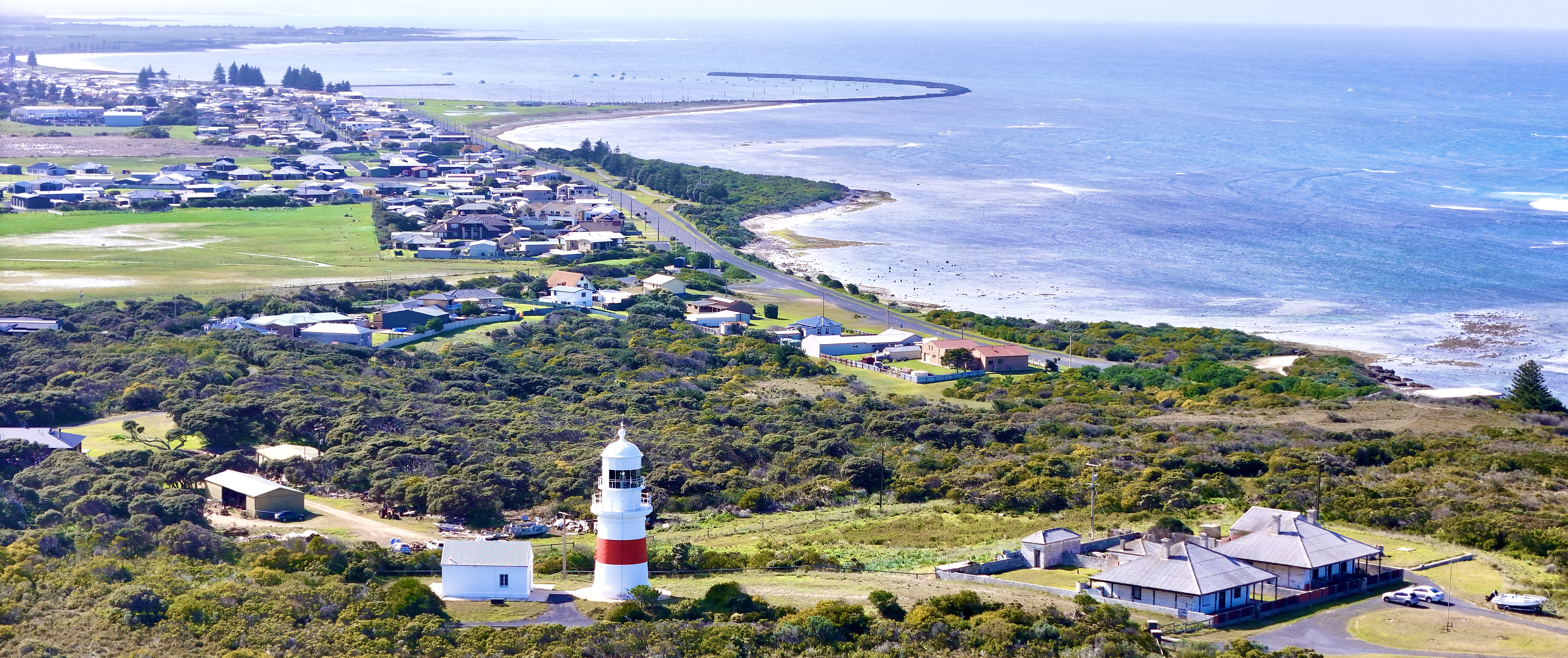
Cape Northumberland Lighthouse, standing at South Australia’s most southerly point near Port MacDonnell, bears the unique distinction of being the colony’s first mainland lighthouse and a structure with one of Australia’s most dramatic histories of coastal erosion and reconstruction. The current white masonry tower, built in 1882, serves as a testament to engineering perseverance after its predecessor, the MacDonnell Lighthouse built in 1858, succumbed to the relentless assault of Southern Ocean waves that undermined its clifftop foundations. Rising from the limestone headlands that characterise this spectacular stretch of the Limestone Coast, the lighthouse has guided mariners past treacherous reefs and into the safety of Port MacDonnell’s harbour for over 140 years, making it a crucial navigation aid for vessels travelling between Melbourne and Adelaide along one of Australia’s most dangerous coastlines.
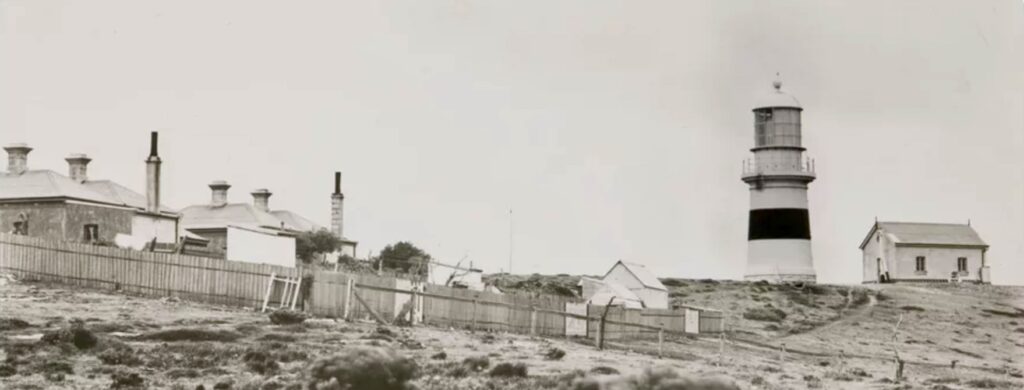
The cape itself presents a dramatic landscape of towering limestone cliffs, sea caves, and blowholes carved by millions of years of Southern Ocean erosion, where the constant battle between land and sea continues to reshape the coastline with each passing storm. The current lighthouse stands approximately 700 metres inland from the original site, a strategic retreat that acknowledges the ocean’s inexorable advance against the soft limestone formations that give this region its name. The surrounding landscape showcases the unique geological features of the Limestone Coast, where ancient marine sediments have been uplifted and sculpted into spectacular cliff formations, underground cave systems, and the Blue Lake that makes nearby Mount Gambier famous throughout Australia.
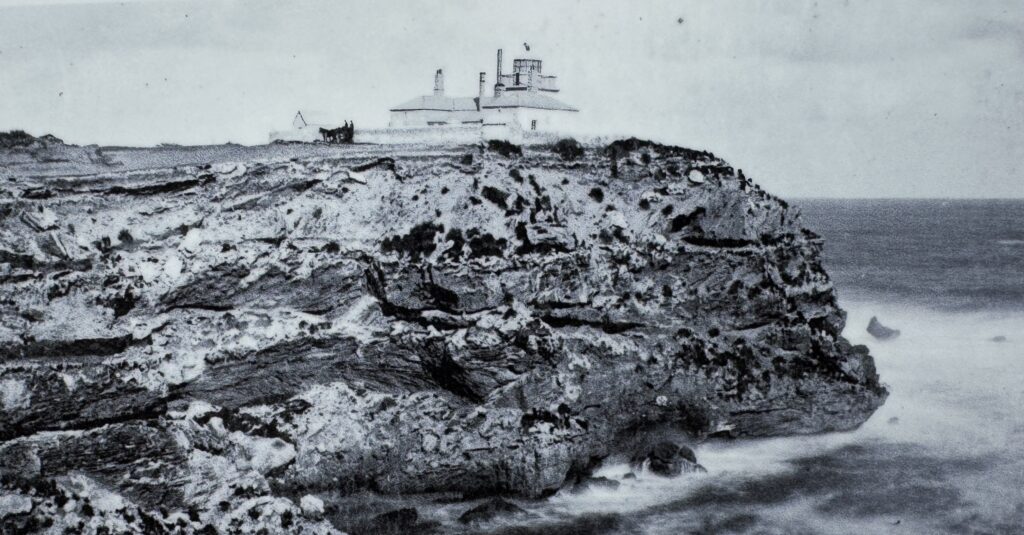
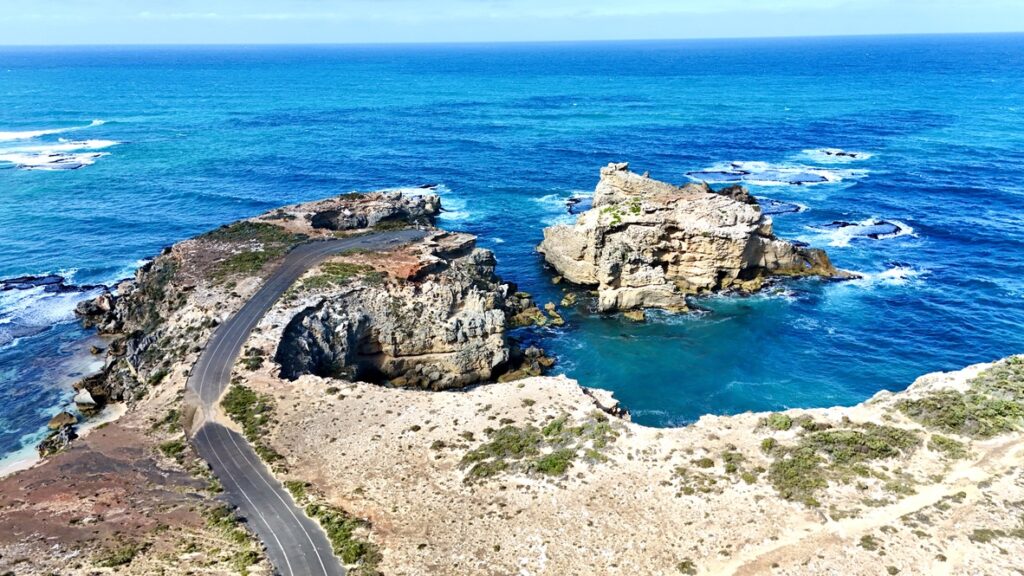
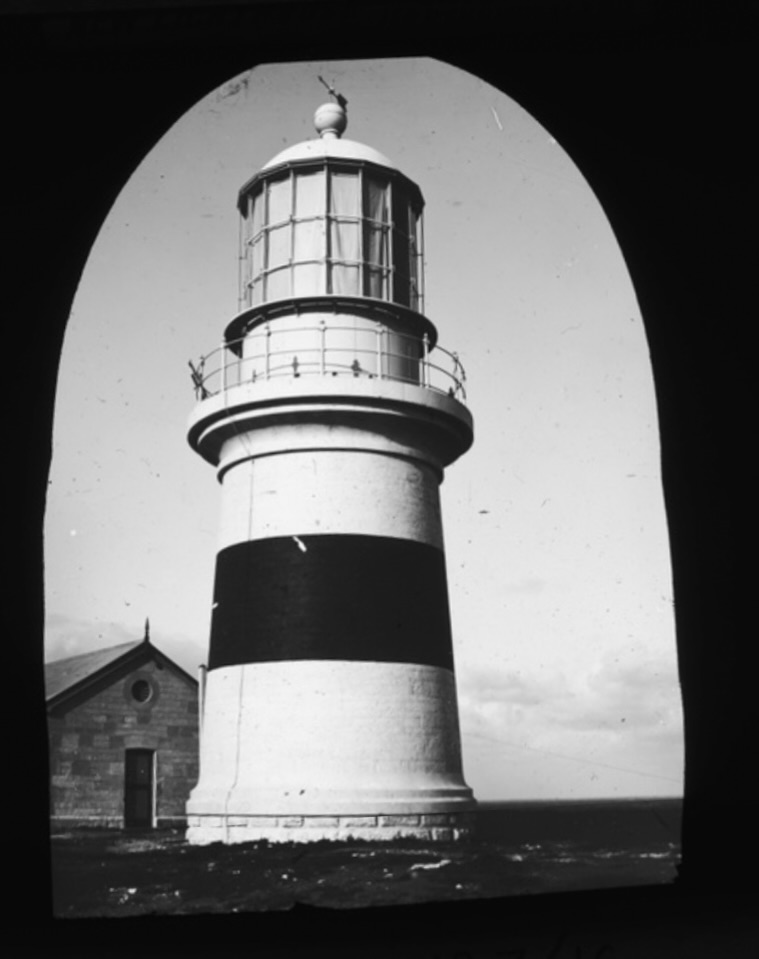
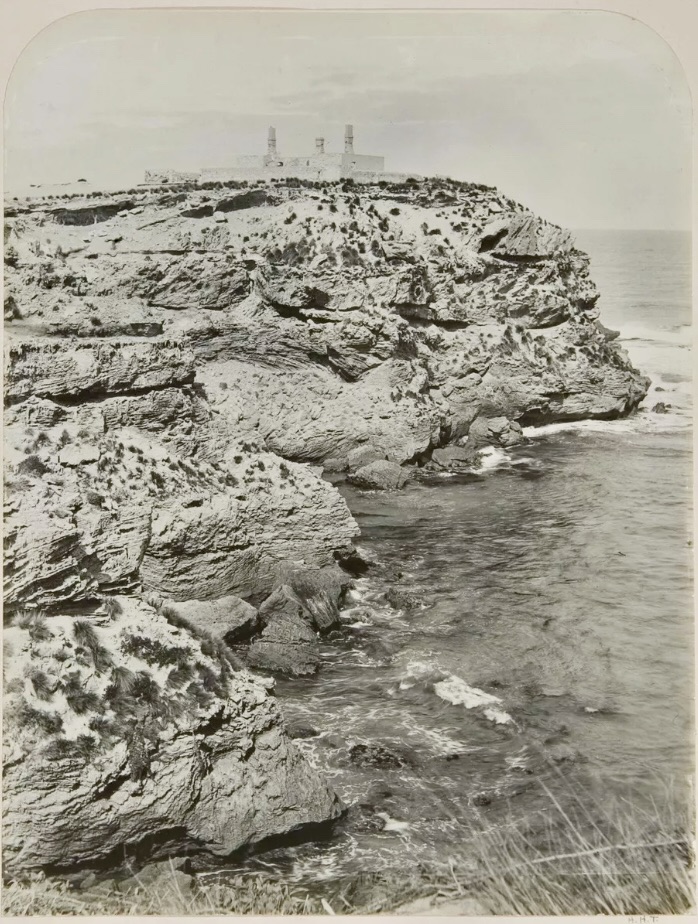
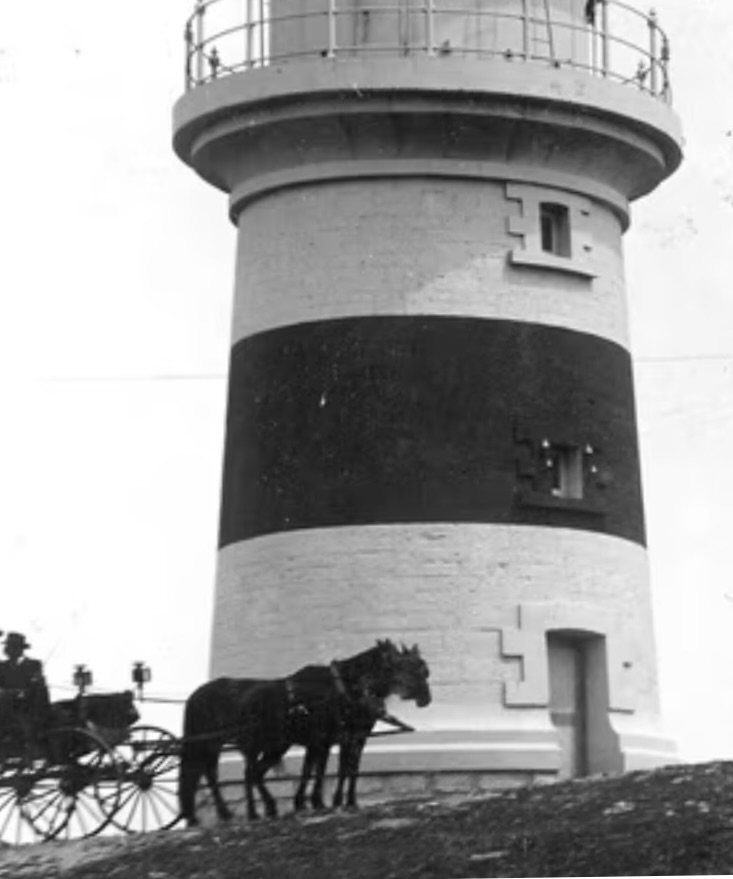
The Boandik (also known as Bunganditj or Bungandidj) people, traditional custodians of this southeastern corner of South Australia, inhabited the Cape Northumberland region for thousands of years before European settlement, their name meaning “people of the reeds” reflecting their intimate connection to the coastal wetlands and estuarine environments that characterised the original landscape. The Boandik people called the area Ngaranga, possibly meaning “noisy” or “caves,” with their oral history recording that dry land previously extended southwards from this area before being flooded.
The establishment of navigation aids at Cape Northumberland became urgent following the devastating loss of life in maritime disasters along South Australia’s treacherous southern coast, most notably the SS Admella tragedy in 1859 when the passenger steamship struck a submerged reef near Cape Banks off Carpenter Rocks, southwest of Mount Gambier, in the early hours of August 6, killing 89 people in one of Australia’s worst maritime disasters. The Limestone Coast’s combination of hidden reefs extending far offshore, unpredictable weather patterns, and deceptively similar headlands created a maritime death trap for vessels attempting to navigate between South Australia’s major ports. Early colonial shipping faced the additional challenge of identifying safe harbour entrances among the numerous caves, inlets, and false bays that characterise this coastline, particularly during the frequent fogs and storms that sweep up from the Southern Ocean.
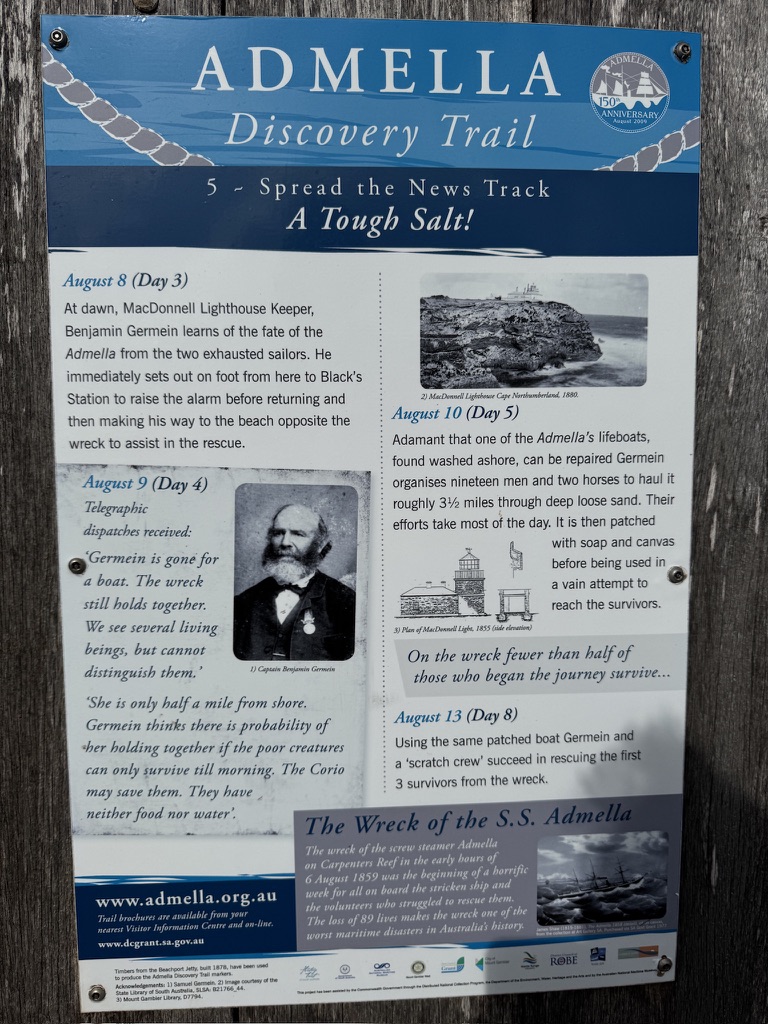
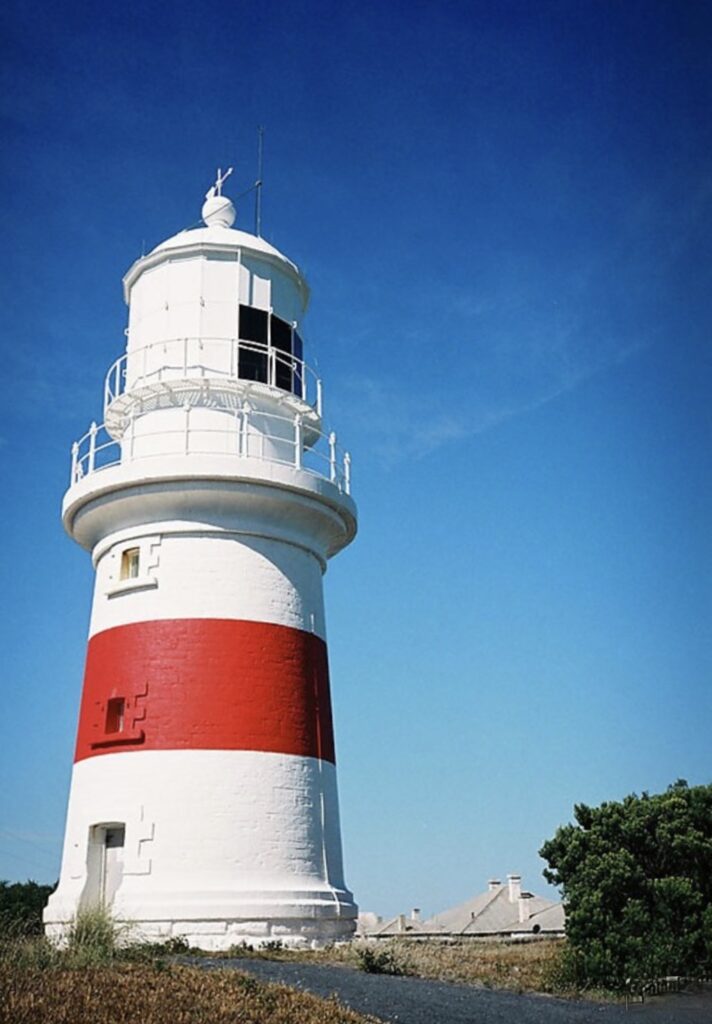
Construction of the original MacDonnell Lighthouse commenced in 1858, with the structure entering service in early 1859 as South Australia’s first mainland lighthouse, featuring an innovative tri-coloured rotating light system that displayed white, red, and green faces in succession. The lighthouse’s designer recognised that different coloured sectors could provide mariners with precise positional information, allowing them to determine their exact location relative to known hazards and safe water. However, the original site proved problematic from the beginning, being narrow and quite exposed with the buildings constructed too close to the cliff edge, making both the structure and its occupants vulnerable to the Southern Ocean’s relentless assault.
The lighthouse’s operational period revealed the full extent of the coastal erosion problem, as the pounding surf made considerable inroads into the limestone cliffs that the lighthouse straddled, with lightkeepers becoming increasingly concerned that the structure would topple into the sea. The soft limestone that formed the cape proved no match for the combined forces of wave action, wind-driven spray, and the freeze-thaw cycles that affected the moisture-saturated rock during winter storms. Similar to the geological processes that continue to reshape the Twelve Apostles formation along Victoria’s Great Ocean Road, the ocean carved deep impressions into Cape Northumberland’s cliffs, gradually undermining the lighthouse’s foundations until reconstruction became inevitable.
Recognition that the original lighthouse was being undermined by the sea led to construction of a new lighthouse in 1882, built approximately 700 metres further inland to ensure protection from coastal erosion, with the original MacDonnell Lighthouse demolished in 1882 due to the danger of collapse. The new lighthouse represented a significant engineering response to the coastal erosion challenge, incorporating lessons learned from two decades of lighthouse operation in this extremely hostile environment. Colonial engineers selected a site that balanced the need for maximum visibility with protection from the ongoing erosion that threatened any structure placed too close to the cliff edge.
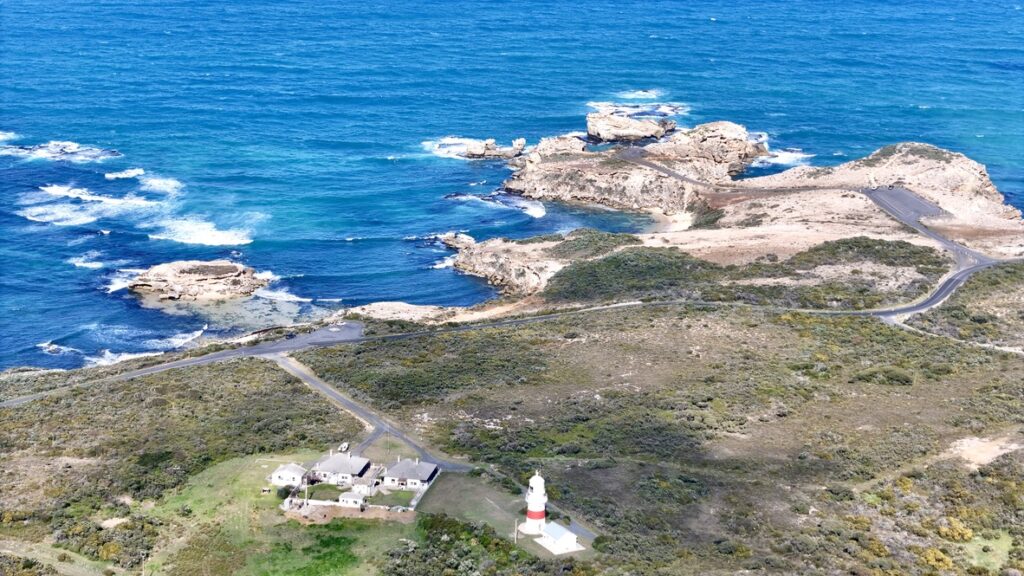
The 1882 lighthouse construction required substantial engineering expertise to create a structure capable of withstanding the extreme weather conditions that characterise Cape Northumberland while maintaining the optical performance necessary for effective navigation guidance. Built from carefully selected limestone and other durable materials, the new tower incorporated the latest lighthouse technology available to colonial South Australia, including improved lens systems and more efficient illumination methods that provided better range and visibility than the original tri-coloured rotating system.
The lighthouse’s strategic importance grew throughout the late 19th and early 20th centuries as steamship traffic increased along the Adelaide-Melbourne route, with Port MacDonnell developing into a significant regional port serving the agricultural and pastoral industries of the Southeast. Maritime infrastructure development included the appointment of a head keeper, installation of three mooring buoys in the bay around 1861 with two additional buoys added later, and construction of a jetty that began in December 1860 and opened in April 1861, creating a comprehensive harbour system that relied on the lighthouse for safe navigation guidance.
The lighthouse families who maintained Cape Northumberland Lighthouse endured considerable isolation, with their nearest neighbours in Port MacDonnell several kilometres away across challenging coastal terrain that could become impassable during severe weather. The lighthouse station required complete self-sufficiency, with keepers maintaining extensive vegetable gardens, livestock, and workshops necessary for routine maintenance and emergency repairs. The limestone landscape, while spectacular, proved challenging for agriculture, requiring importation of soil and careful water management to sustain the gardens that provided fresh vegetables essential for lighthouse families’ health and morale.
Throughout its operational history, Cape Northumberland Lighthouse underwent numerous technological upgrades that reflected advances in lighthouse illumination and navigation technology. The transition from oil flames to kerosene burners, then to electric illumination powered by diesel generators, and finally to modern LED systems powered by solar panels, demonstrated the lighthouse’s adaptation to changing maritime needs while maintaining its essential navigation function for the busy coastal shipping routes.
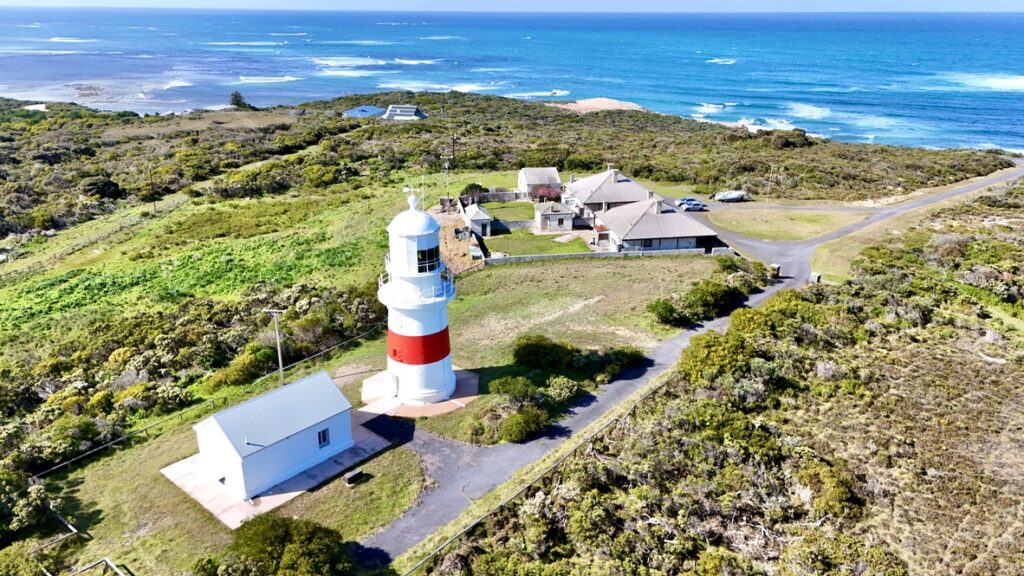
In recent years, Cape Northumberland Lighthouse faced an unusual conservation challenge when local birds, attracted by the high salt content of the historic stonework, excavated and consumed parts of the structure, necessitating a comprehensive $2 million refurbishment by the Australian Maritime Safety Authority. This unique conservation problem highlighted the ongoing challenges of maintaining heritage lighthouse structures in aggressive marine environments where salt spray creates conditions that attract wildlife while simultaneously accelerating material degradation.
The lighthouse’s current status as an automated navigation aid operated by the Australian Maritime Safety Authority ensures its continued service to modern mariners while preserving its heritage values as South Australia’s oldest mainland lighthouse. The automation eliminated the need for resident lighthouse keepers, though maintenance crews continue regular visits to service the solar-powered LED beacon and monitor the structure’s condition in its challenging coastal environment.
Today, the position of the original 1858 MacDonnell Lighthouse is marked by a monument that serves as a poignant reminder of the ongoing struggle between human engineering and natural coastal processes. Visitors to Cape Northumberland can observe both the current lighthouse and the memorial marking the original site, providing a unique opportunity to understand the dramatic coastal erosion that continues to reshape this spectacular coastline.
The lighthouse has become an integral part of the Limestone Coast’s tourism infrastructure, offering visitors spectacular views across the Southern Ocean while providing interpretation of both the maritime heritage and natural processes that define this remarkable landscape. The surrounding coastal reserve protects native vegetation adapted to the salt spray and constant winds, while providing habitat for diverse seabird species and seasonal whale watching opportunities during migration periods.
Cape Northumberland State Park encompasses the lighthouse and surrounding coastal environment, preserving both cultural heritage and natural values while providing public access to one of South Australia’s most dramatic coastal landscapes. The park’s interpretation programs highlight the unique geological features of the Limestone Coast, the maritime history that made the lighthouse essential, and the Boandik heritage that predates European settlement by thousands of years.

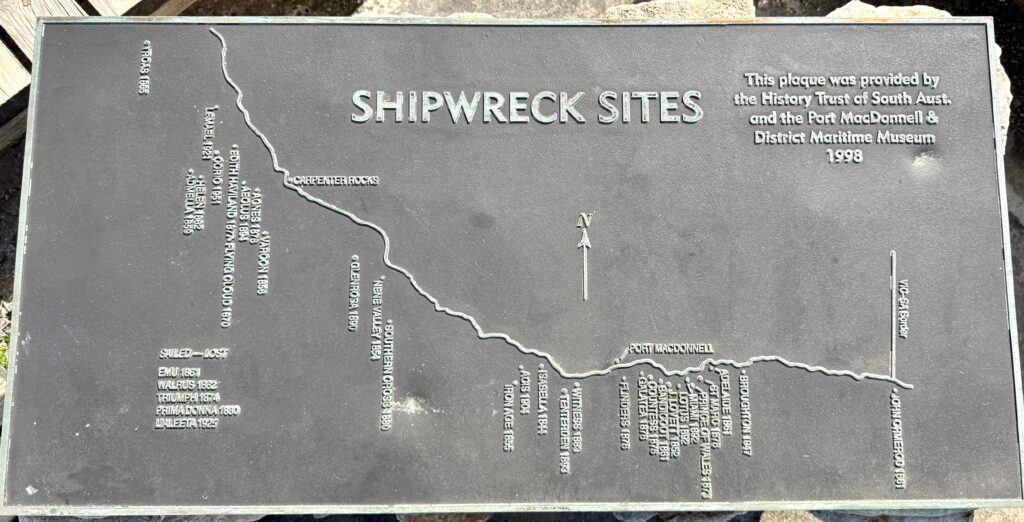
The lighthouse’s survival through 140 years of Southern Ocean storms demonstrates the quality of 19th-century colonial engineering adapted to extreme coastal conditions, while its ongoing operation ensures continued service to the commercial fishing fleet and recreational vessels that still depend on its guidance when approaching Port MacDonnell’s harbour. The structure stands as a testament to both the engineering challenges of lighthouse construction in hostile environments and the vital role these navigation aids played in the development of Australia’s coastal shipping networks.
Conservation efforts focus on maintaining the lighthouse’s structural integrity while adapting maintenance procedures to address the unique challenges posed by salt-loving birds and ongoing coastal erosion. The lighthouse’s position 700 metres inland from the original site provides temporary security against coastal retreat, though geological studies suggest the limestone cliffs will continue retreating at measurable rates, potentially requiring future conservation strategies to protect this irreplaceable heritage structure.
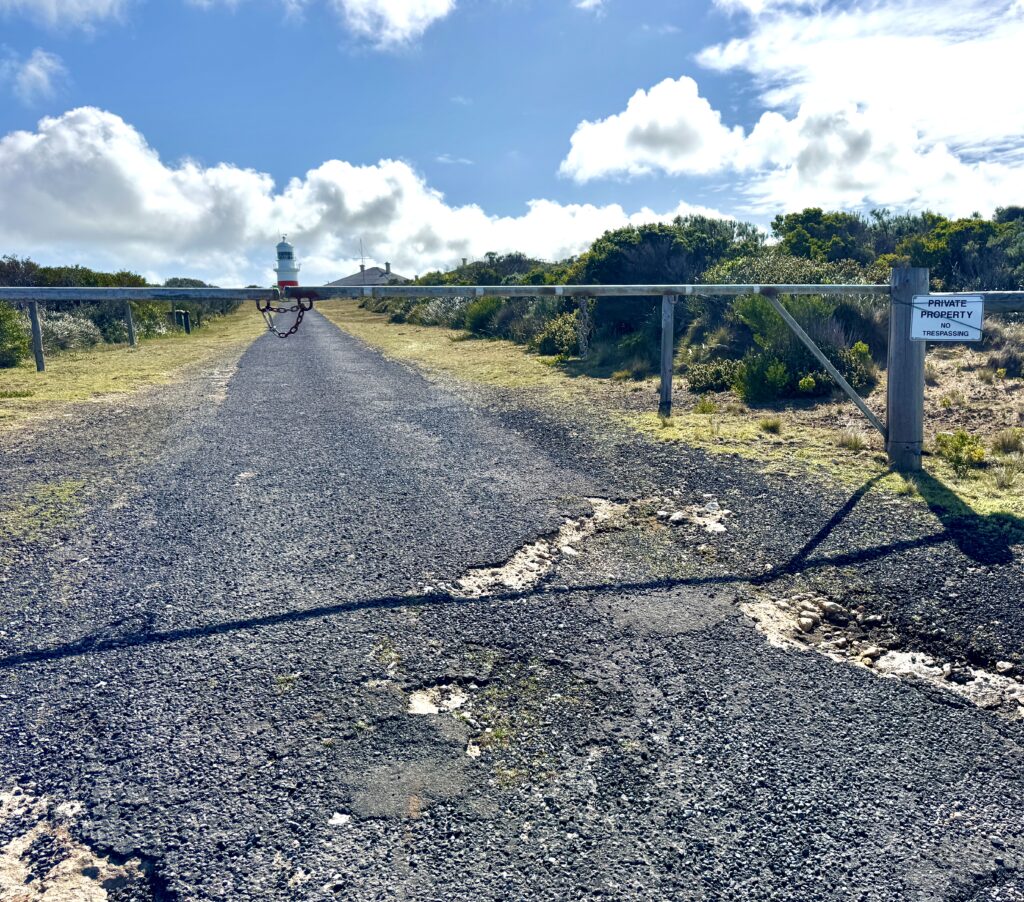
and they don’t like visitors!
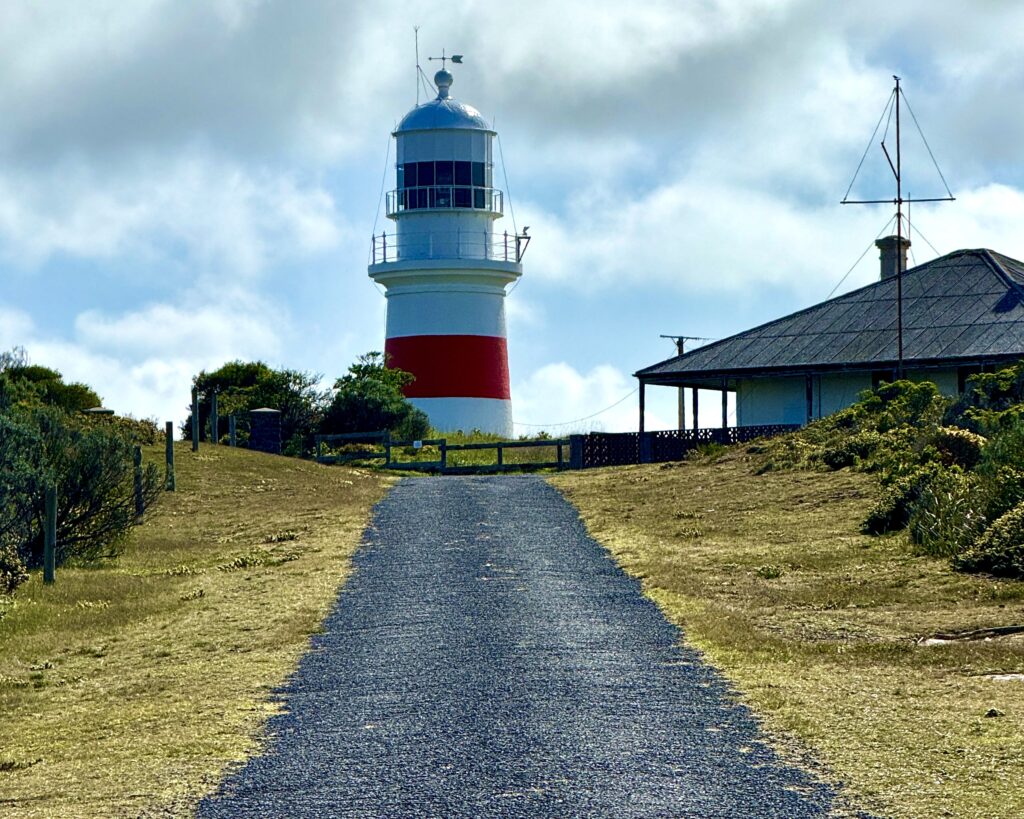
Technical Specifications
First Exhibited: 1859 (original MacDonnell Lighthouse), 1882 (current lighthouse)
Status: Active (Automated)
Location: Cape Northumberland, near Port MacDonnell, South Australia (Latitude 37° 49′ south, Longitude 140° 38′ east)
Construction: 1882 (current lighthouse), replacing 1858 original
Tower Height: Approximately 15 metres
Focal Elevation: Approximately 45 metres above sea level
Construction Material: Limestone masonry
Original Optic: Multi-coloured rotating system (1859), later upgraded to conventional lens systems
Current Light: LED beacon powered by solar panels
Character: Fixed White Light
Range: Nominal range approximately 15 nautical miles
Current Operator: Australian Maritime Safety Authority
Heritage Status: Listed on South Australian Heritage Register
Notable Features: South Australia’s first mainland lighthouse; rebuilt 700m inland due to coastal erosion; unique conservation challenge from salt-eating birds; memorial marks original 1858 lighthouse site
Disclaimer: Due to the need to get across the “Top End” in the dry season (which usually ends in October), and to spend time in the outback on the way north I have rushed the first stage of Act 3. In order to document the lighthouses I’ve visited I’ve enlisted the help of Elon Grok and A.I. Claude to help on these Lighthouse Stories. Despite their claims of infallibility I’ve found some of their facts not to be accurate and would welcome any corrections, which they will learn from! I have also sourced a number of photos from the public domain (i.e. Dr Google) to compliment the shots I’ve taken on my travels. I would like to concentrate on telling my personal experiences and thoughts as I travel around and intend to reedit these lighthouse stories when I have time.